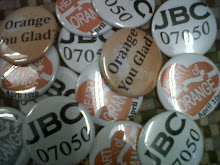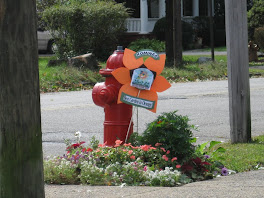Below is his article "Field Work" from the Scottish Urban Regeneration Forum in Scotregen, Issue 49:Spring 2010
Also check out his website at: denyscandy.com
Scotregen, Issue 49: Spring 2010
(Scottish Urban Regeneration Forum, Edinburgh, U.K.)
(Scottish Urban Regeneration Forum, Edinburgh, U.K.)
FIELD WORK by Denys Candy
“In a new city, there are ghosts of old cities. There are lies and re-creations. Everyone thinks that a city is full of hope, but it isn’t. Sometimes, it is the end of imagination.”
Dionne Brand, A Map to the Door of No Return, Vintage Canada, Toronto, 2001 (P110)
Currently in the USA we can’t quite imagine giving everyone health insurance, generating new kinds of work, imprisoning fewer people or taxing the mega-wealthy, leading me to wonder how to address this collective lack of imagination. In our desire to craft a healthier future, how do we conduct what poet Seamus Heaney (quoting T.S. Eliot) calls “a successful raid on the inarticulate?” Here are some notes from my field work as a consultant, facilitator and trainer.
Re-making Master Planning: Increasingly, when master plans incorporate sustainable solutions or chapters on green or open spaces, these are subjugated to a primary focus on commercial, housing and transportation markets. But re-making a place can be productively enriched when the native expertise of locals is combined with that of “outsiders” to re-experience and re-imagine places on the way to delivering projects, designs and development proposals. When community organizer Terri Baltimore and I asked residents in Pittsburgh’s Hill District (through a series of experiential events) to look at their landscape to discern their future, before seeking out corporations that might bring jobs to the area, the result was a renewed, deepened awareness of the natural environment and a strategy for civic ecology that can now frame the City’s master plan for the area. Called Greenprint, this strategy builds on the history of the place and its people, proposing an expansion of woodlands from the hillside edges into the central “village” core, and new ways for water, people, animals and vehicles to get around. Our mantra is “Remember the woods, the village and conveyance!” With Greenprint, the City and local partners are collaborating to ground the entire master plan in a focus on the health of the area’s landscape and people, including their relationships to markets. Our human or civic imprint on the landscape can thus remediate, heal and nurture it, hence the term civic ecology. Practical application for the Hill’s residents kicks in, for instance, when a developer proposes new housing: local stakeholders can insist on site plans that expand the woodlands right into the heart of the community. Through Greenprint, the health of the landscape will influence both the master plan and subsequent developments.
Greenprint would be a good example of a successful raid on the inarticulate. To borrow from another poet, Mary Oliver, it is a “truly contemporary creative force… something that is built out of the past, but with a difference.” (1994)
"You need reality to make the imagination do interesting things, to renew itself. Take the reality out of the situation and you simply repeat yourself.” Poet Charles Simic in a newspaper interview. (2005)
Addressing the reality of racial and economic segregation. As a (part-time!) songwriter I have encountered many interesting musicians, visual artists and writers. Several years ago, Terri Baltimore, novelist Fiona Cheong (Scent of the Gods; Shadow Theater) and I wondered aloud how artists might shine a light on the entrenched segregation in our region. The community organizer in me wanted to organize a public dialogue, but noticing that art events and performances tended to reflect the city’s segregated life by drawing segregated audiences, we took a different route and organized a performance series. Our goal was to create an environment – a joyful space – in which a diverse audience could gather to enjoy music, poetry and prose, and to transform social relations on the spot. Confluence (www.confluenceart.org) was designed to attract all kinds of people. It featured both well-known and emerging artists of Asian, African, Hispanic and European heritage. Events (with child care) alternated between two locations – an established arts venue in a middle-class area and a community center in a low-income area, thereby inviting/challenging our audience to move in new ways around the city.
The results were magical, drawing hundreds of people from the unemployed to the well-heeled. Arriving by bus, bike, banged-up and fancy cars, (on one occasion braving hurricane strength winds and rain) many different-looking folk participated. The artists were energized by the format and the mix of people responding to their work. In a welcoming environment, it was easy for poems, songs and stories to work as the glue connecting everyone.
Addressing intractable societal challenges is tough work, and often, success seems fleeting. Confluence was impermanent. But our choice must be to create in microcosm, even temporarily, that which we want to see in the macrocosm, to seek transformative moments in our social relations and be sure to pay attention to and learn from them when they arrive. As pianist Keith Jarrett says, “Transformative moments are very rare, or they seem so due to our inattention. But maybe this is wrong, and they happen constantly, though we are absent.” (2005)






No comments:
Post a Comment